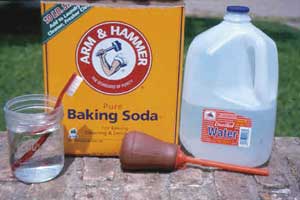
Beat the heat by dipping into a North Louisiana creek, where the waters are cool and action is unstoppable.
Whoever said that an ounce of prevention is worth a pound of cure might well have been talking about marine batteries. Good battery maintenance, including proper charging, ensures that your boat’s engine will crank, your electric trolling motor and other accessories will work and you will get the maximum number of seasons from your battery investment.
The Trojan Battery Company offers a great check list for inspecting a marine battery.
First on the list is examining its appearance. Look for cracks in the case, and make sure the top of the battery, its posts and connections, are free of dirt, fluids and corrosion. If the batteries are dirty, they should be cleaned. Fluids on or around the battery may indicate that electrolyte is spilling, leaching or leaking out. A small amount of acidic moisture on the battery top may be the result of gassing during normal operation.
Trojan recommends that when cleaning a battery, start by making sure all its vent caps are tight. Clean the battery top with a cloth or brush and a solution of baking soda and water.
It is critical that the vent caps are tight so that none of the cleaning solution or crud gets inside the battery cells.
Rinse with water and dry the battery top with a clean cloth. Clean the battery terminal posts and the terminal clamps or ring connectors with a post and clamp cleaning brush.
Reconnect the clamps or ring connectors and thinly coat them with petroleum jelly. Trojan recommends that the bolts and nuts on automotive-type post clamps be tightened to 50-70 inch-pounds of torque and the wing nuts on threaded terminal tops to 95-105 inch-pounds. Always look for loose or damaged hardware and frayed or broken cables. Fix or replace them as necessary.
Charging a battery and then checking its state of charge is more involved than you might think. Taking a specific gravity reading from each cell with a hydrometer is the most accurate way to test a battery’s state of charge, and the reading should be taken before adding any water to a cell.
Fill and drain the hydrometer two to four times before drawing a sample from a cell for a reading. This keeps electrolyte from previous cells from affecting accuracy. Be sure to fill the hydrometer to the proper level so its internal float is fully supported and you get a good reading.
Record each reading, and return the electrolyte to the cell. Check all the cells by repeating the same steps, replace the vent caps and then wipe off any spilled electrolyte.
Correct the specific gravity readings to equal an ambient temperature of 80 degrees by adding .004 for every 10 degrees above 80 or subtracting .004 for every 10 degrees below 80. The accompanying table from Trojan correlates specific gravity and voltage readings to a battery’s state of charge. Batteries from other manufacturers may vary from these values, but this table offers a good point of reference.
A false surface charge remains on a battery for several hours after charging. Getting an accurate voltage reading means waiting until the batteries have been idle (no charging or discharging) for at least six hours — 24 hours is even better. Then, check battery voltage with an accurate volt meter.
Water should only be added after fully charging a battery, but prior to charging there must be enough water in each cell to cover the plates. Only distilled or deionized water should be used. After charging, remove the vent caps, and add enough water to bring the level in each cell up to 1/8-inch below the bottom of the fill well.
Taking proper care of your batteries is the best way to make sure they take care of you.


